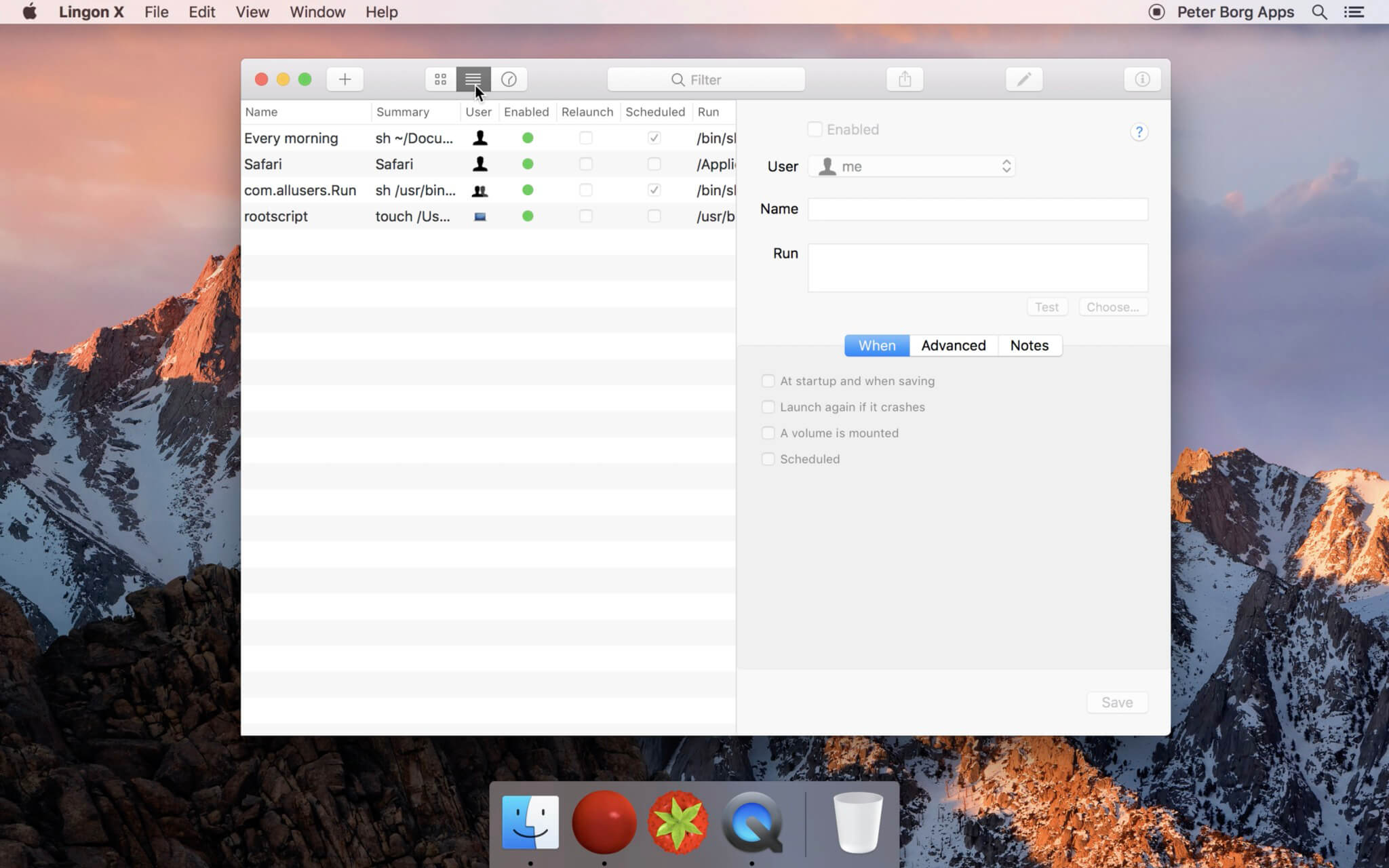

I'm going to address both of those using a plist that I use to keep Keyboard Maestro's helper engine running: Sometimes what you want to keep running isn't obvious at first. Note that if you want to keep an app running, you have to include the path all the way to the executable file, not just the ".app" so if you wanted to keep Dropbox running all the time, the path would be /Applications/Dropbox.app/Contents/MacOS/Dropbox and not just /Applications/Dropbox.app! Then replace "/PATH/TO/PROGRAM/YOU/WANT/TO/KEEP/RUNNING" to the path on your system. So if you quit the app yourself for some reason, launchd assumes that you want to keep it off until you restart the application, reboot your Mac, or log out and then back in. By setting that to 'false' we are telling launchd to only restart this program if the app does not exit successfully.
Lingon x 8 install#
This ensures that the program will be available all the time, but there's a problem: what happens when there's a new version of the app and you want to install the update? You can quit the app, but launchd is just going to restart it. The "KeepAlive" key tells launchd to restart the process if it stops for any reason. To modify it, just change the two parts written in ALL CAPS. If you want to use that, click/tap on the 'raw' link and it will load in your browser, then save it to your computer. Here's a fairly generic template that I created for you to use: Personally, I find it a lot easier to look at working examples, and see how and why they work.
Lingon x 8 manual#
There is no shortage of documentation for it, including Creating Launch Daemons and Agents and the ist Manual Page, but it's easy to get overwhelmed with the amount of information available.
Lingon x 8 mac os x#
All of which is fairly ridiculous, especially when you realize that you're talking about two versions of an app which, together, cost $8.Īpple released launchd as part of Mac OS X 10.4 ("Tiger") in 2005, and has steadily improved it ever since.

Despite having made a reasonable choice between two less-than-ideal options, the Mac App Store reviews call it "horrible" and "useless" for not having the features that Apple won't let the developer include. For those who still want Lingon 2, it is still available as a separate app.

He chose to make a new version of Lingon (version 3) priced at $3 instead of $5, which makes sense because it could do less than Lingon 2.
Lingon x 8 upgrade#
Creating a new version of Lingon would allow the developer to make sure that it complied with sandboxing requirements, but customers who bought Lingon 2 would have to pay for Lingon 3 because the Mac App Store does not have any way for developers to offer upgrade pricing to existing customers. Updating Lingon 2 to comply with sandboxing requirements would mean that users who had purchased Lingon 2 and then updated to the newer version would lose features they had paid for. This was a bit of a "no-win" situation that many developers are facing. Peter Borg, Lingon's developer, was faced with a choice: either neuter Lingon 2 to fit sandboxing requirements, or release a new version of Lingon. Hopefully this situation will get better as Apple increases what sandboxed apps can do, but for now developers are left with little choice. Sandboxing is a good idea, but right now it is so restrictive that it is causing more problems than it solves. If you have noticed apps leaving the Mac App Store recently, there's a good chance sandboxing is the reason. These restrictions are imposed by Apple for other developers, even though Apple allows its own software to do many things which aren't possible with sandboxing restrictions. To make matters worse, Lingon ran into the new "sandboxing" restrictions for the Mac App Store.īriefly stated, sandboxing rules now limit what any Mac App Store application can do. You can disable notifications at any time in your settings menu.


 0 kommentar(er)
0 kommentar(er)
